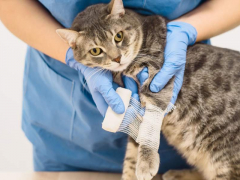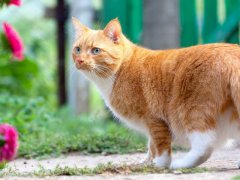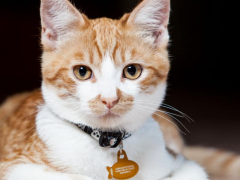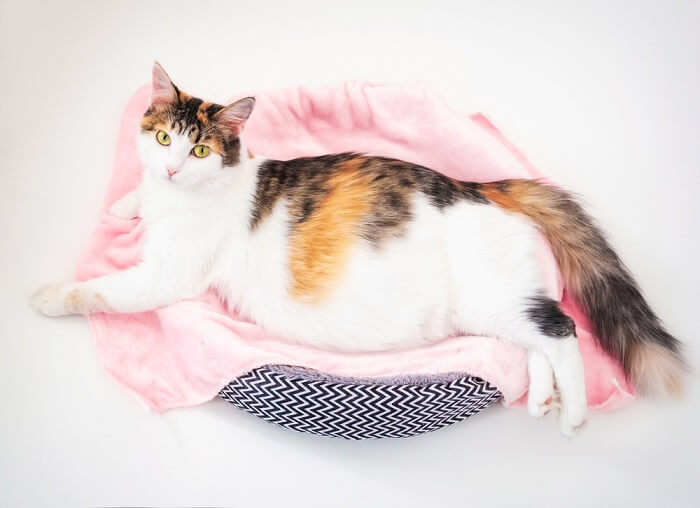
If your cat is looking a little rounder than usual or starts displaying nesting behaviors, you may be in for a surprise!
Nothing is cuter than a litter of newborn kittens but, adorable as they may be, caring for kittens can be a lot of work. The more you know about cat pregnancy, the better you can predict when your cat will give birth so you can be fully prepared for the big day. Your pregnant cat needs special attention including a healthy and balanced diet, a proper place to give birth, and ongoing veterinary care to keep her and her litter safe.
Understanding the Heat Cycle
Cats will begin having heat (estrus) cycles from as early as 4-6 months of age. They are seasonal breeders, having multiple heat cycles throughout the lighter, warmer times of year – in the Northern Hemisphere, this is from around February – September, although indoor cats may cycle all year round.
Each heat cycle is made up of three distinct phases.
- Pro-estrus: lasting just 1-2 days, this is the stage preceding estrus, where the cat is not yet ready to mate
- Estrus: the fertile period of heat, where the queen will show behavioral changes and be receptive to mate. Lasts for 3-14 days.
- Interestrus: if not mated, the time between cycles lasts 2-3 weeks.
If mating occurs during the estrus period, the cat enters diestrus. The fertilized eggs transform to embryos and move to the uterus for implantation.
How To Tell if Your Cat Is Pregnant
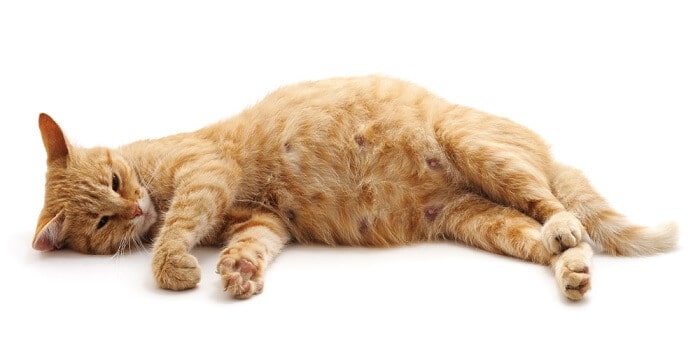
Your cat’s belly will get noticeably larger from around weeks 3-4 of pregnancy
If your cat had access to an intact male cat during a heat cycle, chances are she will have mated and might well be pregnant. But what are the key signs of feline pregnancy?
Here’s some common signals that your cat may be pregnant:
- Behavior change: some cats become clingier and more affectionate in pregnancy, whereas others may become more solitary and even aggressive.
- Sickness: cats, just like some women, can suffer from morning sickness
- Lethargy: pregnancy is tiring! You may notice your cat is sleeping more and less inclined to play or exercise.
- Weight gain: a few weeks into pregnancy, you may notice your cat’s belly is growing, and she is getting noticeably bigger.
- Increased appetite: pregnant cats need more food, as they are using lots of energy and protein growing their precious kittens
- Nipple changes: a pregnant cat’s nipples will get larger, pinker and swollen from a few weeks into pregnancy
- Nesting: in late pregnancy, cats may begin to show nesting behavior
Stages of Pregnancy for Cats
A typical cat pregnancy lasts 63-65 days (check out our calculator!), but it can be as short as 61 days or as long as 72.
Cats go through five stages of pregnancy, each with specific symptoms that can guide you to tell when your cat’s labor is close.
1. Fertilization
If a cat is mated during her fertile estrus phase, she will ovulate and the egg will be fertilized and become an embryo. The embryos implant along the uterine horns around 2 weeks after fertilization.
2. Embryo Development
Over the next few weeks, the embryos will grow and develop. Each embryo has its own placenta, which allows it to gain nutrients from the mother. Embryos will reach around 2.5cm by week 3 of gestation, and at this point may be able to be palpated by a veterinarian.
3. Late Gestation
Once the kittens are fully formed, the last stage of pregnancy involves their growth ready for birth. This requires a lot of energy from the queen.
4. Pre-Labor
Also called the nesting stage, this is when your cat will start looking for warm places to give birth. The pre-labor stage usually starts a few days before delivery, and you may observe several signs including drops of milk in the nipple area, loss of appetite, and rectal temperature drop to about 100 degrees Fahrenheit.
5. Labor
This is the final stage of cat pregnancy. It starts with the cat licking her abdomen and genitals, which will stimulate birth. Labor is usually fairly quick in cats, with all kittens being born within around 8 hours of starting the process. Cats rarely need intervention in labor, and are often best left in a calm, quiet place to give birth safely.
How to Care for a Pregnant Cat
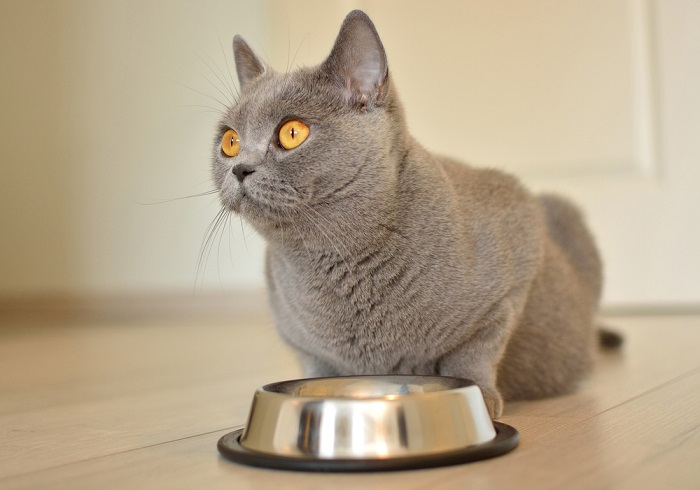
Choosing a suitable diet is an important part of caring for a pregnant cat
Pregnant cats require some extra attention during this special time, from nutrition to veterinary attention. It’s a responsibility to have an expectant mother in the home, so it’s important to step up to these extra duties as a cat owner.
Nutrition
A properly formulated cat food diet is extremely important for a pregnant cat. A pregnant cat needs optimal nutrition to be able to sustain a healthy pregnancy and to provide nutrients for her kittens before and after birth. She’ll require higher levels of energy, protein and certain nutrients to help her kittens grow and mature. You may want to switch her to a cat food formulated for pregnant and nursing queens, but speak to your veterinarian about a suitable diet.
Veterinary Care
If you think your cat is pregnant, it’s important to take her to a vet for a check over. Vets can confirm pregnancy using palpation, scans or x-rays. Your cat may need recommended vaccinations and worming treatment, and your veterinarian can advise on aspects of health and nutrition important for pregnancy.
Be Prepared
Pregnancy in cats is fairly short at 63-65 days, and this can easily creep up on you. Cats are usually fairly independent in labor, but it’s worthwhile having a birthing area prepared and some thought into how to manage the kittens afterwards. Provide her with a suitable nesting box. It can be as simple as a cardboard box or laundry basket lined with towels and blankets. It doesn’t hurt if you put down some absorbent pads underneath in preparation – the birthing process can be a messy one.
Stages of Labor for Cats
As the big day approaches, it’s normal to feel excited and nervous about your precious kitty having their own kittens!
Here are some signs that labor is imminent:
- Loss of appetite
- Drop in body temperature
- Clingy behavior
- Pacing, restlessness
- Calling, vocalization
- Licking at her flanks and genital region
Once the birthing process begins, the first kitten should be born in anywhere from 5 to 30 minutes. Kittens are born with their amniotic sacs, which the mother cat will remove, and she will stimulate the new kitten to start breathing on its own by licking it. The mother will also sever the umbilical cord herself and may eat the placenta to obtain its nutrients.
The number of kittens determines how long the birthing process will take, but the average labor lasts around 6-8 hours. There could be a pause of 30 to 60 minutes – sometimes more – between births. However, if the cat is actively pushing but there is no kitten produced after 60 minutes, call your veterinarian.
What To Do After Your Cat Gives Birth
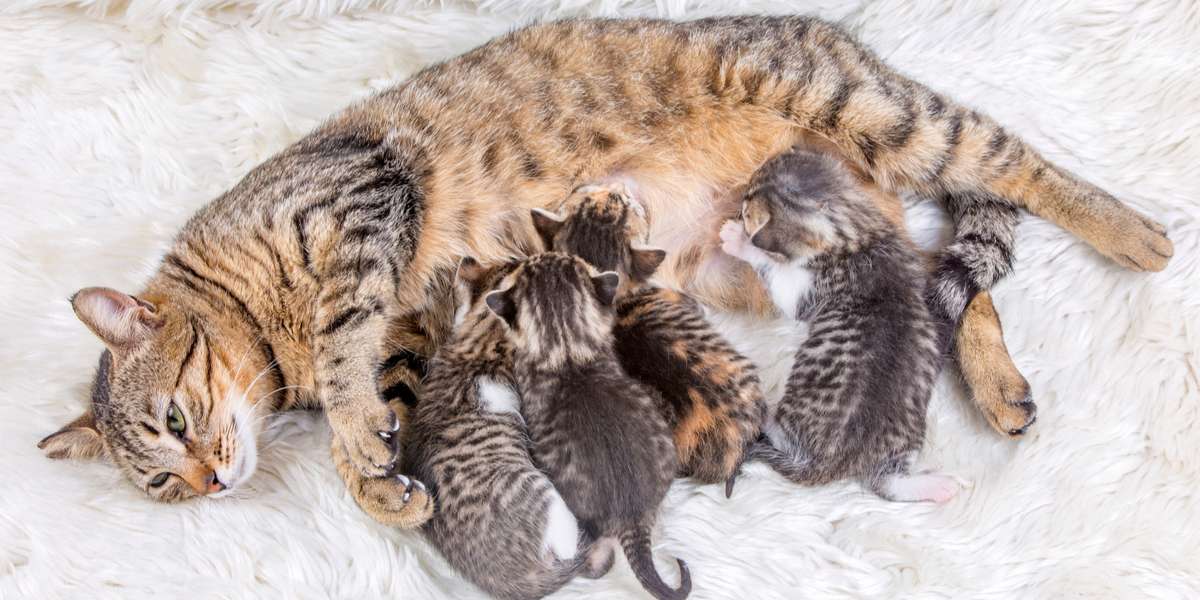
Cats usually give birth without needing intervention, and have good mothering skills.
If your cat’s birth goes smoothly, leave them in peace to bond with their kittens and to rest and recover. Avoid touching or handling the kittens as much as possible for the first couple of weeks. Make sure they are in a warm, draft-free area, with bedding which is clean and dry.
Observe from a distance to make sure the kittens are feeding. They should start to nurse almost immediately after birth. If they haven’t suckled by 30 minutes after birth, carefully guide them to a nipple and assist them to latch.
Provide plentiful food and fresh water for the nursing queen and monitor her closely for signs of stress. It is usual for cats to be protective of their kittens, but if they seem distressed, are moving their kittens a lot or not showing any mothering behavior, you may need to intervene.
Similarly, watch for signs of ill-health that may need veterinary attention:
- Bleeding or discharge from the vagina
- Swollen, sore, hot or engorged mammary region (mastitis)
- Poor appetite
- Excessive drinking
- Vomiting
- Uncoordinated, wobbly walking or twitching
-
MV Root; SD Johnston; PN Olson Estrous length, pregnancy rate, gestation and parturition lengths, litter size, and juvenile mortality in the domestic cat J Am Anim Hosp Assoc (1995) 31 (5): 429–433
